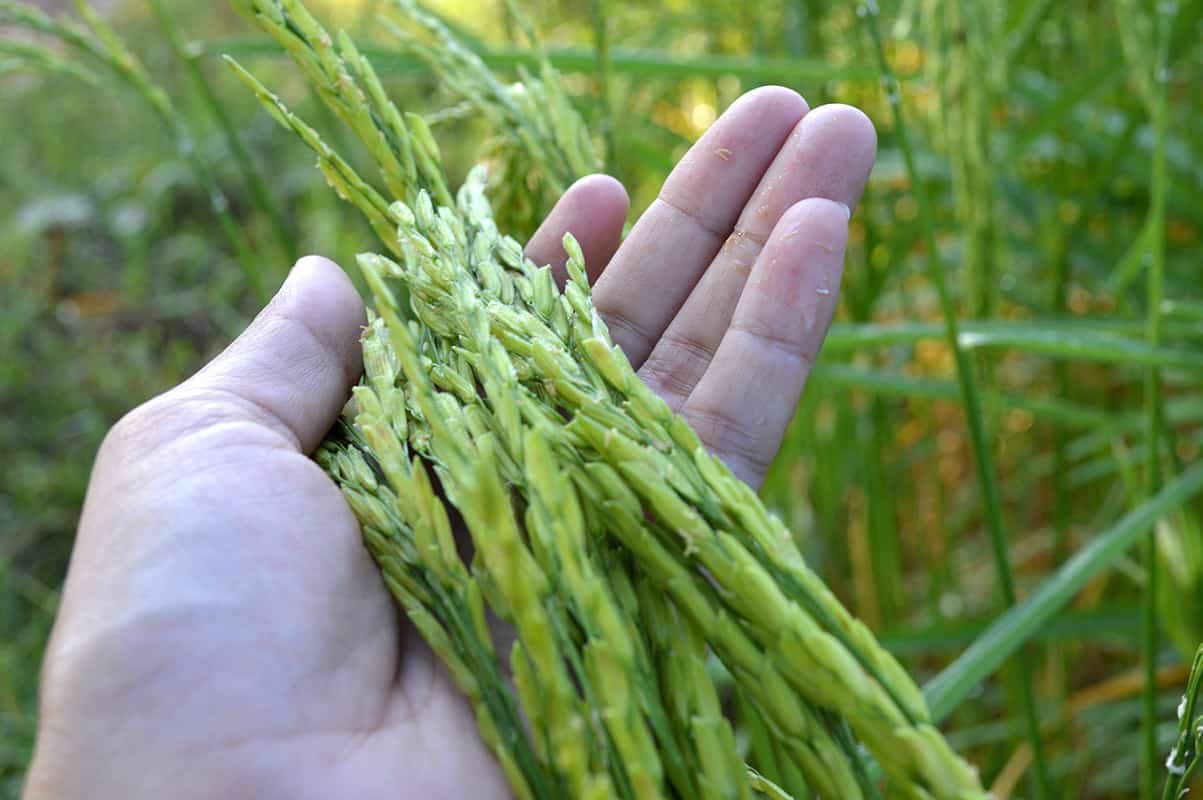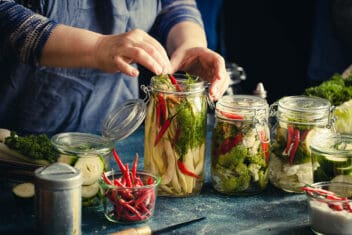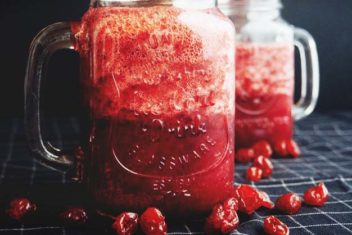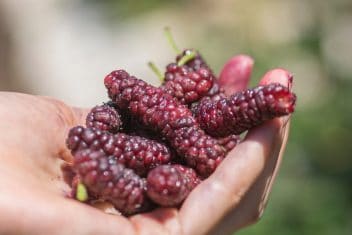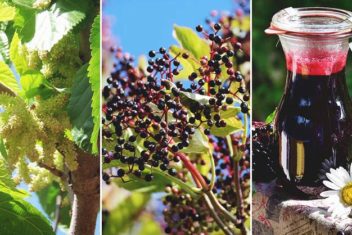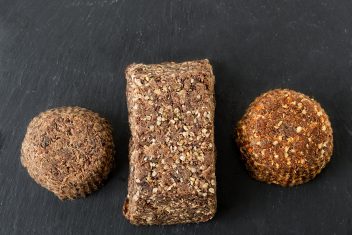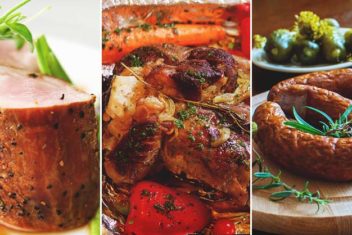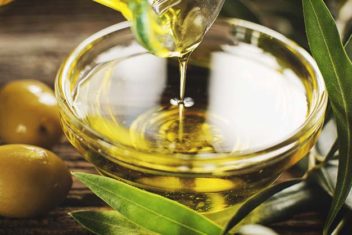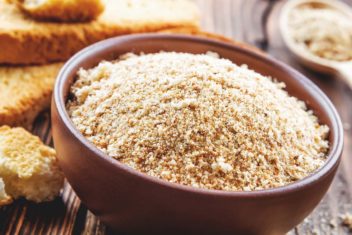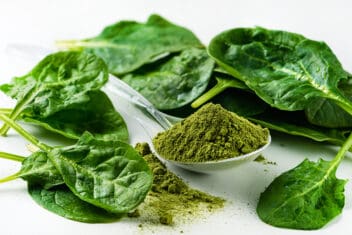Is there anything prettier than a big bouquet of wildflowers? Maybe a table full of wild flours that you can cook and bake with!
Okay, I’m really sorry about that horrible pun, but being able to forage for baking ingredients in the wild really is amazing.
Below are 14 edible wild plants that you can make into flour.
Let’s Get Ready!
A few notes before we get started. Most of these need to be mixed and matched with other grains in order to bind together well.
Fortunately, there are so many different plants out there, so you can experiment with combining several to see which ones you like best.
As a bonus, many of these are naturally gluten-free!
To make these wild flours, you’ll need a dehydrator and some method for grinding the items into powder. If you don’t want to go full Luddite and use a quern or mortar and pestle, then pick up a couple of coffee grinders at your local thrift shop instead.
Nuts
If you’re a fairly devoted cook or baker, the chances are that you’ve used nut flours before. Ground almonds are magnificent in many baked goods, especially cookies and cakes.
When baking with nut flours, keep in mind that they are very dense. Most people only use about 20% nut flour in baked goods, specifically for this reason. Try combining these with light, powdery flours like wheat, rice, sorghum, amaranth, tapioca, or potato.
1. Acorns (Quercus sp.)
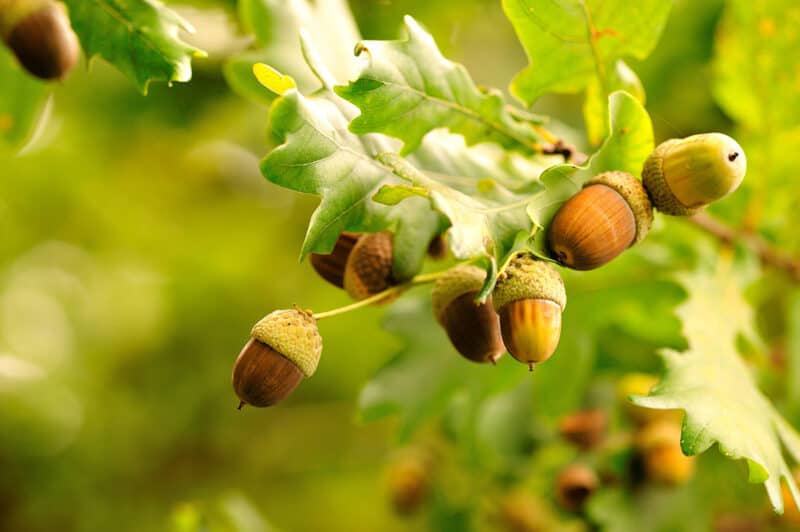
Acorns are generally edible by humans, but they need to be leached before you can use them. Leaching is a process in which these nuts are rinsed or simmered in order to remove their bitter tannins.
Some acorns have an extra skin layer called the “testa” between the nut and the outer shell. This can be removed after roasting, either before or after leaching by rubbing them with a coarse towel.
The best acorns to use for flour are white oak (Quercus alba), and red oak (Quercus rubra). You’ll need to harvest at least a gallon of these babies in the autumn to be worthwhile, and processing them can take several days.
That said, their nutty flavor is well worth the time and effort. You might make some enemies with the local squirrel population, though.
2. Chestnuts
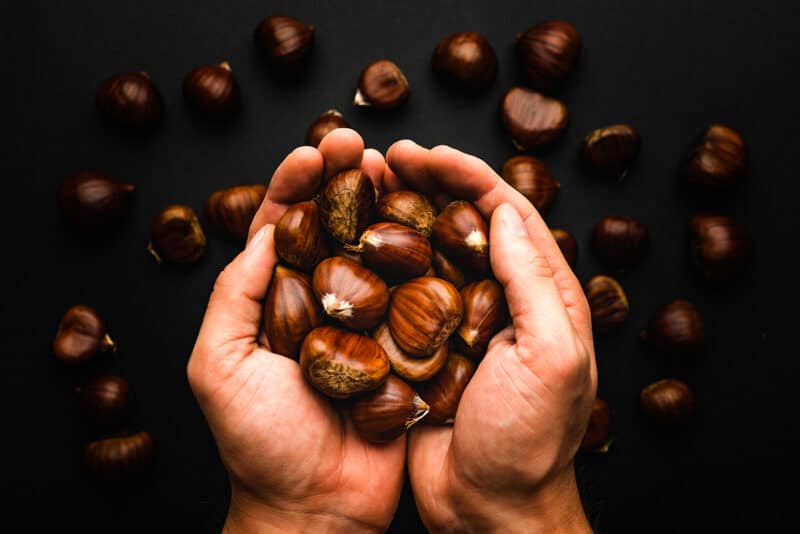
Chestnut trees grow wild all over the world, but not all chestnuts are created equally. In fact, some are quite toxic if eaten by humans. Just a handful of horse chestnuts contain enough esculin to kill you if you eat it raw, so make sure you identify your chestnuts properly.
The easiest way to tell whether the ones you’ve found are edible or harmful is to look at their overall appearance. The edible varieties (from the Castanea genus) have sharp, spiky burrs all over their husks.
If you’ve ever had one thrown at you, you’d remember. In contrast, toxic chestnuts have a warty husk that kind of looks like toad skin. Additionally, the toxic ones’ inner nuts are round and smooth. Look for a point or “tassel” on the nut’s end, and you should be good to go.
You’ll need to make a cross their husks with a sharp knife, then roast them at 400°F for about 20-25 min. Once cooled, peel them, dehydrate them at 105 F for 15-24 hours (or until you can’t snap them in half with your bare hands). Then grind them into powder.
Chestnut flour is sweet and light and is incredibly good in cakes.
3. Hazelnuts
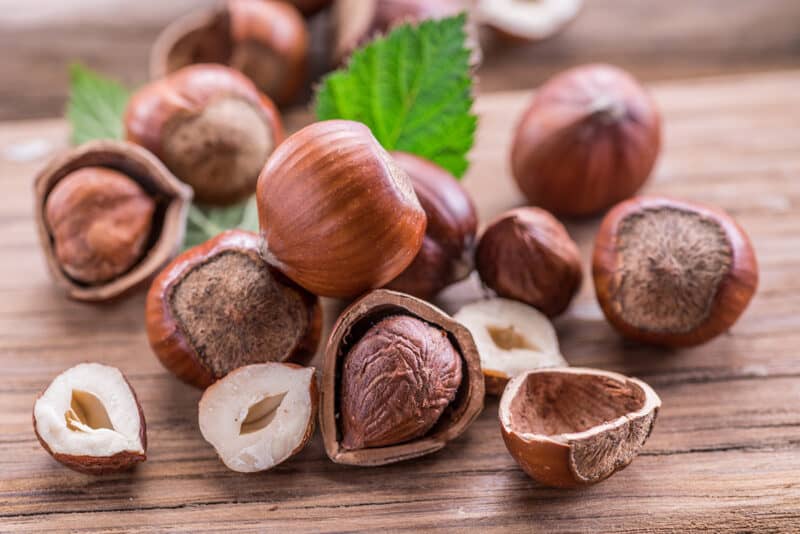
These are also known as filberts, and grow prolifically all over Europe. The technique for turning them into one of your wild flours is much simpler than acorns or chestnuts.
Just crack them open, and roast the nuts until dry. Then grind them into powder, and store the flour in the freezer.
4. Beech Nuts
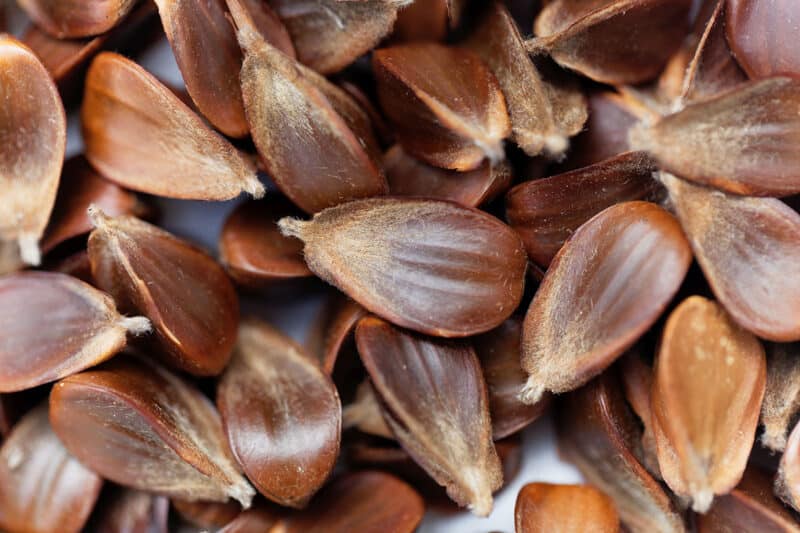
These are the nuts from American Beech trees (Fagus grandifolia), which have declined sharply in North America over the past few decades. Process these as you would the hazelnuts above.
5. Walnuts
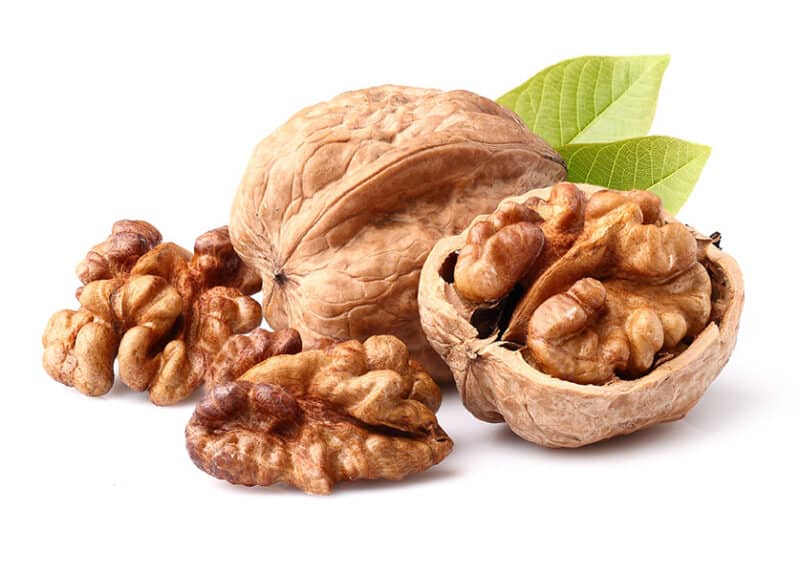
Black walnuts (Juglans nigra) grow wild across North America, and are the bane to many a gardener because of the chemical (juglone) they exude. If you happen to have a walnut tree nearby, however, then harvest its nuts to make into flour.
6. Pecans
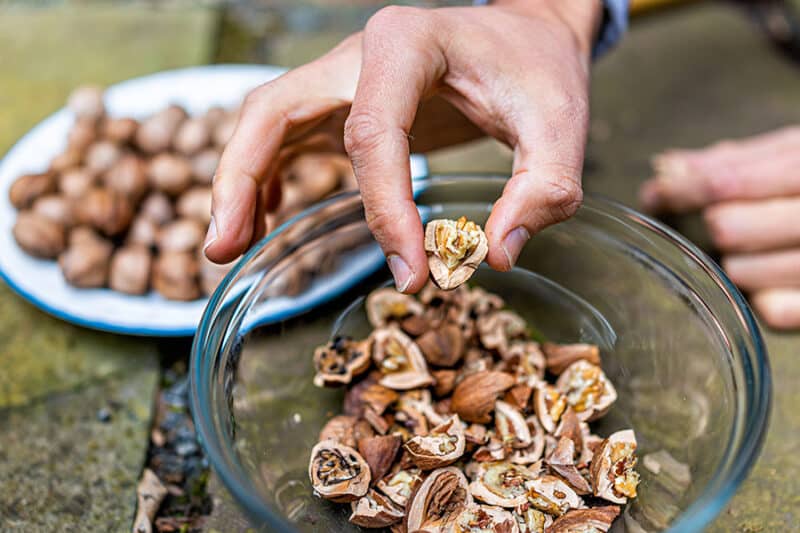
Pecans are sweeter and easier to shell than walnuts and make a magnificent, dense flour when processed. Like the other nuts here, just crack ’em open, roast ’em, and grind ’em.
Try to store all your nut flours in the freezer rather than the pantry. They all have high fat contents and can go rancid if stored at room temperature. The last thing you want is to put all that time and effort into this process, only to have these wild flours go manky in the cupboard.
Seeds and Grains
Many of the plants on and around your property might surprise you with the edible grains they produce. In fact, you may have wandered past these plants thousands of times without realizing what wonderful sources of wild flours were all around you.
7. Curly Dock (Rumex Crispus)

You may have come across this plant on the edges of your property, or when hiking through the woods. It’s considered an invasive species in most parts of the world, so don’t feel bad about harvesting the seeds.
You can’t really winnow the chaff off of these, so just toast the seeds whole and process them into flour with the husks intact. The resulting product is fairly bitter, like buckwheat. Use about 10% of it with other, sweeter flours in breads and baked goods to fill them out.
8. Lamb’s Quarters (Chenopodium album)
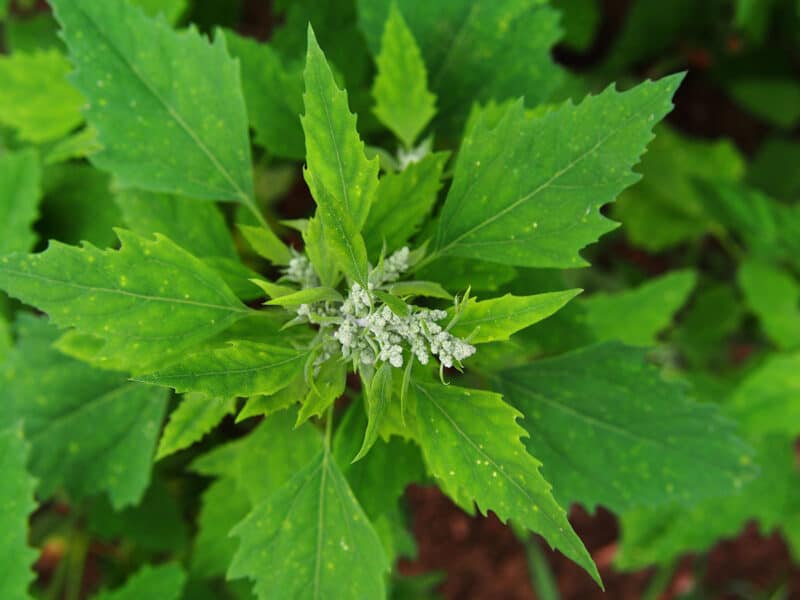
You may know this plant (Chenopodium sp.) as “fat hen” or “goosefoot,” depending on where you live. It’s a member of the amaranth family, and its greens are delicious when cooked and eaten like spinach. But we’re focused on flours here, and you can make a lightweight flour out of this plant’s seeds.
If you do some basic research, you’ll find that the seeds are fairly high in oxalic acid. This can muck up your kidneys long-term if you eat them raw, but cooking neutralizes the acid. As a result, drying them, grinding them, and baking them into bread or whatnot won’t do you any harm.
9. Wild Rice (Zizania aquatica)
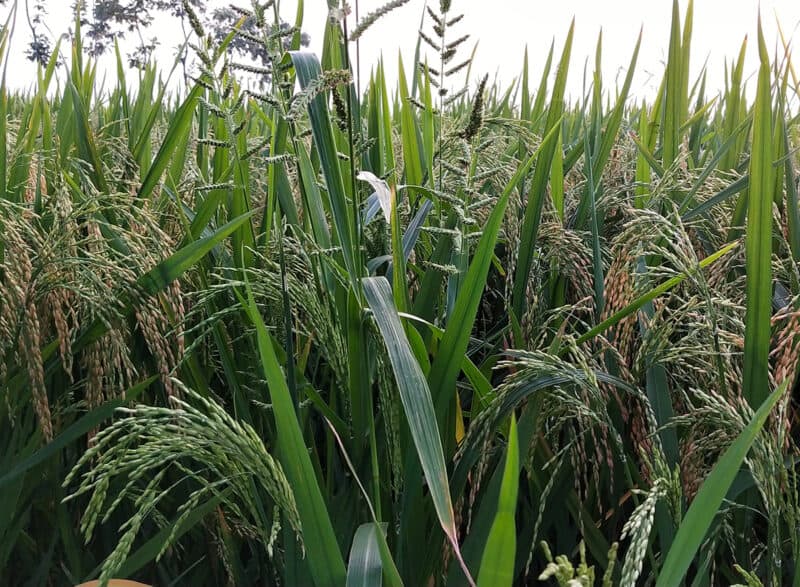
These annual plants grow prolifically in marshlands, rivers, and creeks throughout northeastern North America. You can find it from the Midwestern US States through to the coast and from Manitoba all the way to Newfoundland.
The seed heads float just above the water, where ducks and other waterfowl often eat them. You may have to fight them for the rice, so be forewarned. This rice is high in protein, iron, and potassium and can also be dehydrated and ground into flour.
10. Wild Rye (Elymus canadensis)

If you live in colder parts of the northern United States, or various parts of Canada, keep an eye out for wild rye (ryegrass).
These plants are hardy perennials that can serve a great dual purpose: keeping soil from eroding, while also adding some extra grains to your diet.
You can cook the grains into a type of porridge, but they’re much better ground into flour. They taste similar to regular rye and are great in breads, crackers, and other baked goods.
Roots
Have you ever baked with potato or tapioca (cassava root) starch? These are of course derived from the tasty tubers we know and love. Fortunately, other roots can also be transformed into wild flours.
11. Sunchoke/Jerusalem Artichoke (Helianthus tuberosus)
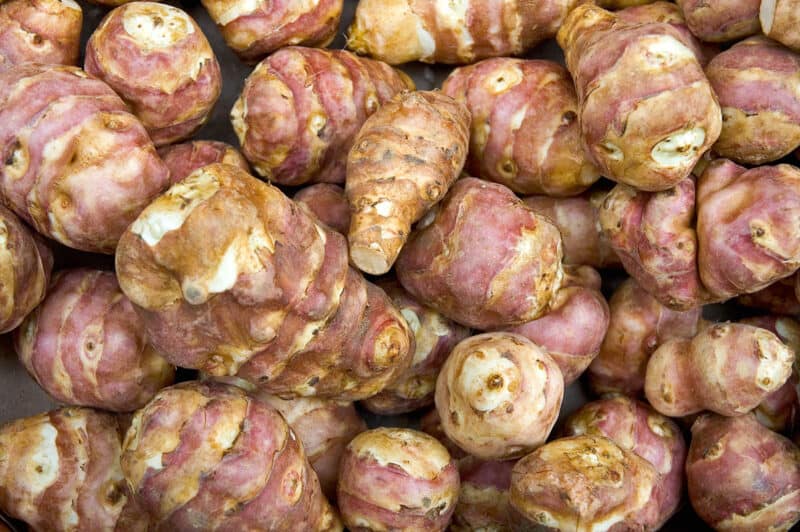
Scrub and peel fresh sunchokes, then slice them about 1/4 of an inch thick. Spread these around your dehydrator, and process them at 135°F for about 5 hours. They should be quite crispy and snap easily between your fingers at this point.
Then, grind them into a fine powder, and store this in the freezer until needed. Add some of this stuff to cauliflower pizza crust or into other savory baked goods.
12. Cattails (Typha latifolia)
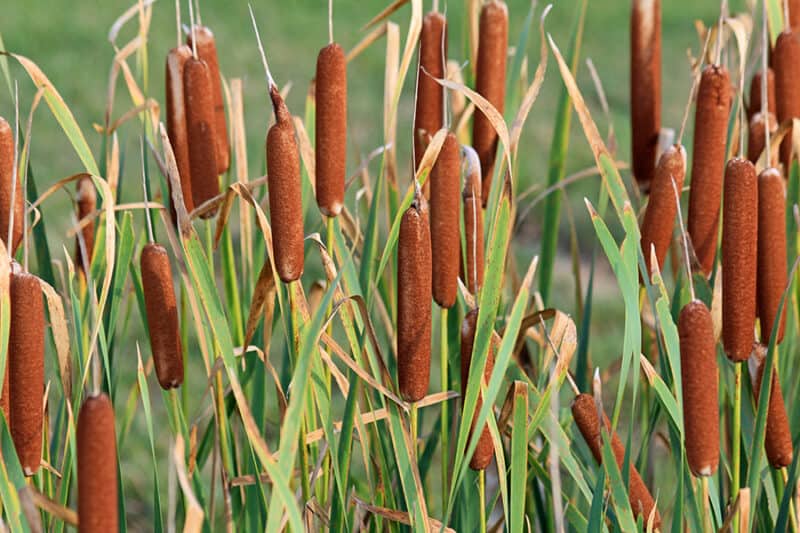
Cattails are known as “nature’s pantry” for good reason. The stalks and roots (rhizomes) of these fabulous plants are edible, as are the young flowering tops, and pollen. In fact, if you want to use cattail as one of your wild flours, use a mixture of processed roots and pollen.
To make root flour, harvest a big bunch of cattail roots and scrub them clean with a nailbrush. Place parchment on a baking sheet and set these at 200°F for 8-10 hours.
Then peel them well, slice them thinly, and dehydrate at 105°F for another couple of hours. Process them through a grinder, sift well, and store in the freezer.
As for the pollen, the best way to harvest it is to pop paper bags over pollen-covered mature cattail heads. Tie the bags tightly around the stems, then cut them off so about 8″ of stem sticks out the bottom.
Hang these upside-down somewhere dry and warm for about a week. Then shake (preferably while dancing around), and hang back upside down. The pollen will accumulate at the bottom of each bag: just pour that into a jar or container, and store that in the freezer too.
Bark
It’s a running joke that people who are into natural foods (especially plant-based ones) eat tree bark, but you know what, it can actually be quite tasty.
13. Pine Bark
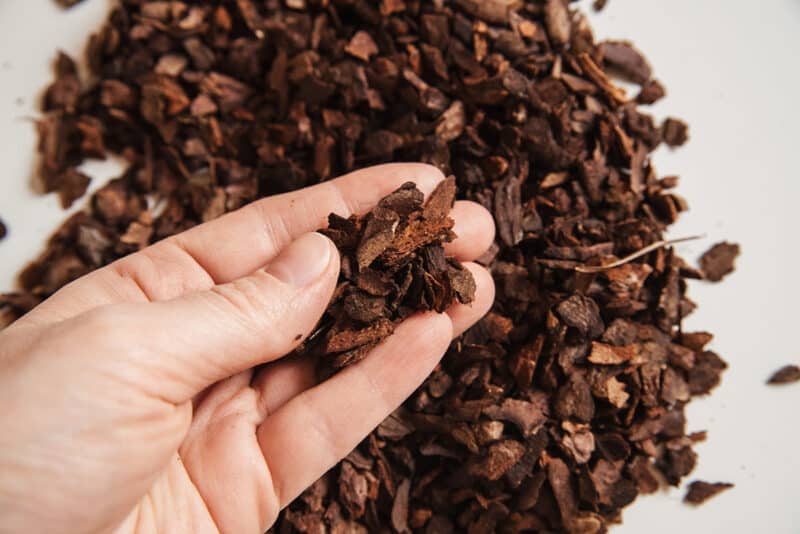
People in Scandinavian countries have been baking with pine bark for centuries. Millennia, even. This bark is surprisingly rich in nutrients, which goes for the inner cambium and the outer bark.
Harvesting pine bark for one of your wild flours will damage the tree. As such, it’s good to harvest only from healthy pines that you’ll be cutting down for lumber or firewood.
Cut off some of the bark, chop it into half-inch pieces, spread on a baking sheet, and bake at 350°F for 40-50 minutes. Allow to cool, then grind through a food processor or grain mill.
Mix some of this into rye bread, crackers, or cakes.
14. Birch Bark (Betula sp.)
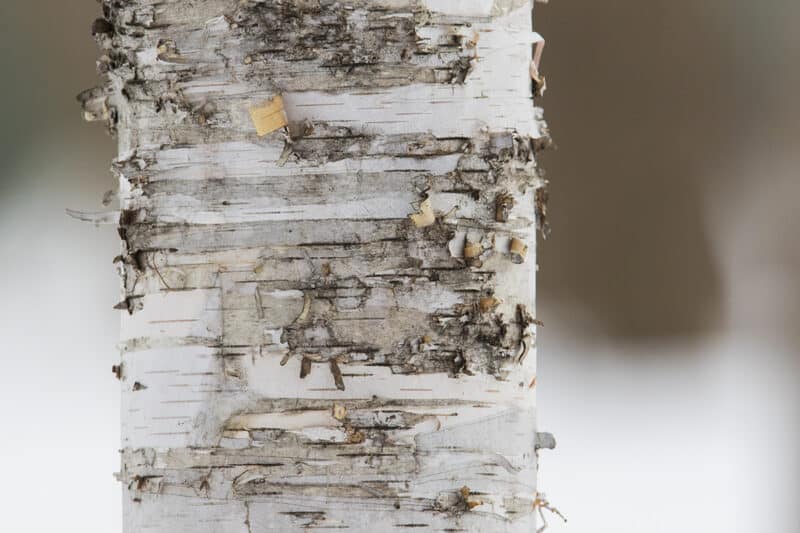
Unlike pine bark, you don’t use birch’s papery outer skin at all. Instead, it’s the tender inner cambium that can be transformed into powder. Just please only harvest from a recently fallen or cut tree, never a live one.
Scrape the soft cambium away from the papery bark. When you have enough of it, spread it out on a baking sheet and dry it at 200°F for several hours, before grinding it into powder.
A Few Notes
As mentioned, most of these flours can be ground with a simple electric coffee grinder. I have three of these little machines: one solely for coffee, one for culinary ingredients, and one for medicinal plants.
However, if you’re prepping for potential survival, I recommend getting a manual, hand-cranked mill as well. These attach easily to your kitchen counter, and you can transform pretty much any grain into flour with it.
Try to have alternatives to electric appliances on hand, just in case. That way, in case the power grid falls apart, you can still bake muffins.
As a final note, please do LOTS of research before harvesting these plants, so you make absolutely sure that you’re gathering non-toxic varieties.
Additionally, keep in mind that people with certain food or seasonal allergies can also react to some of these ingredients. For example, people with peanut allergies may be sensitive to acorns, and those with latex allergies can be triggered by birch bark.
Find out whether you may cross-react to any species, and when in doubt, speak to a herbalist or naturopathic practitioner.
